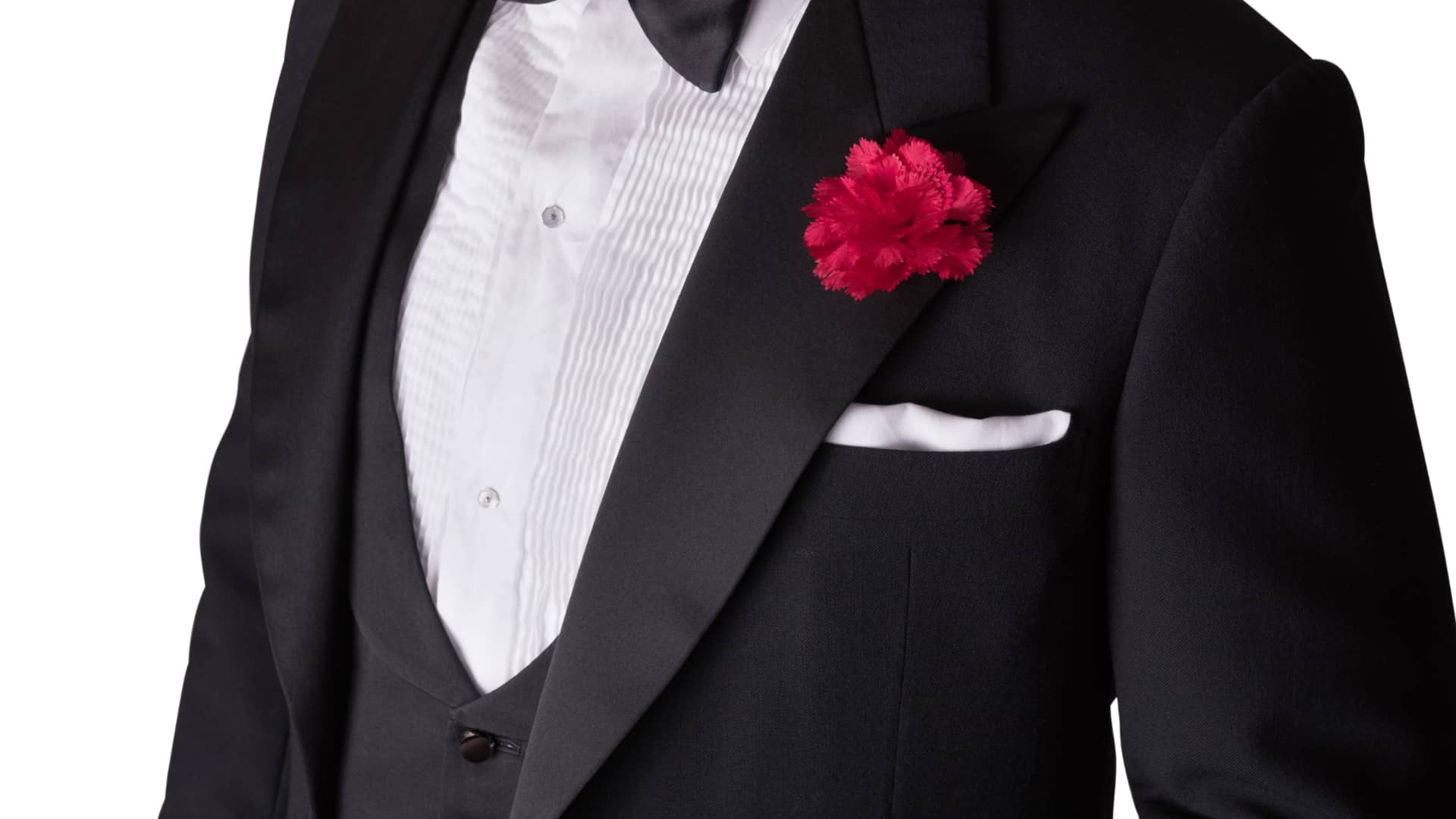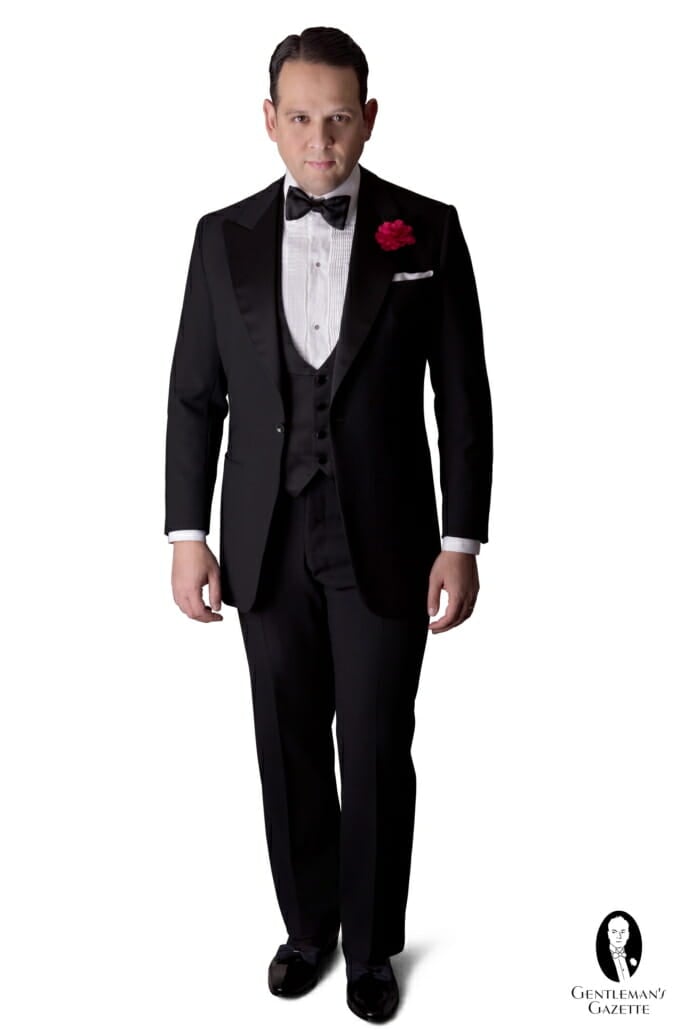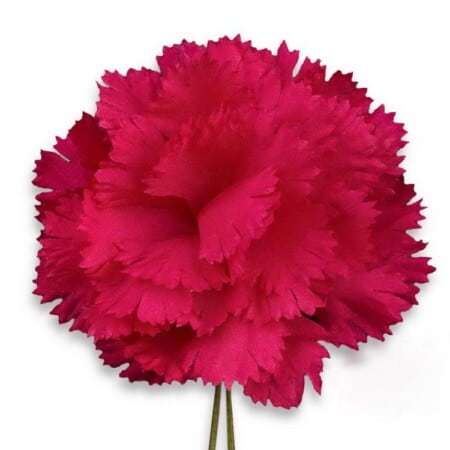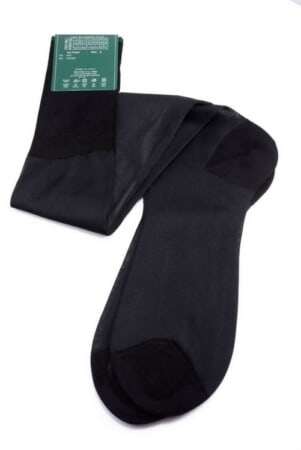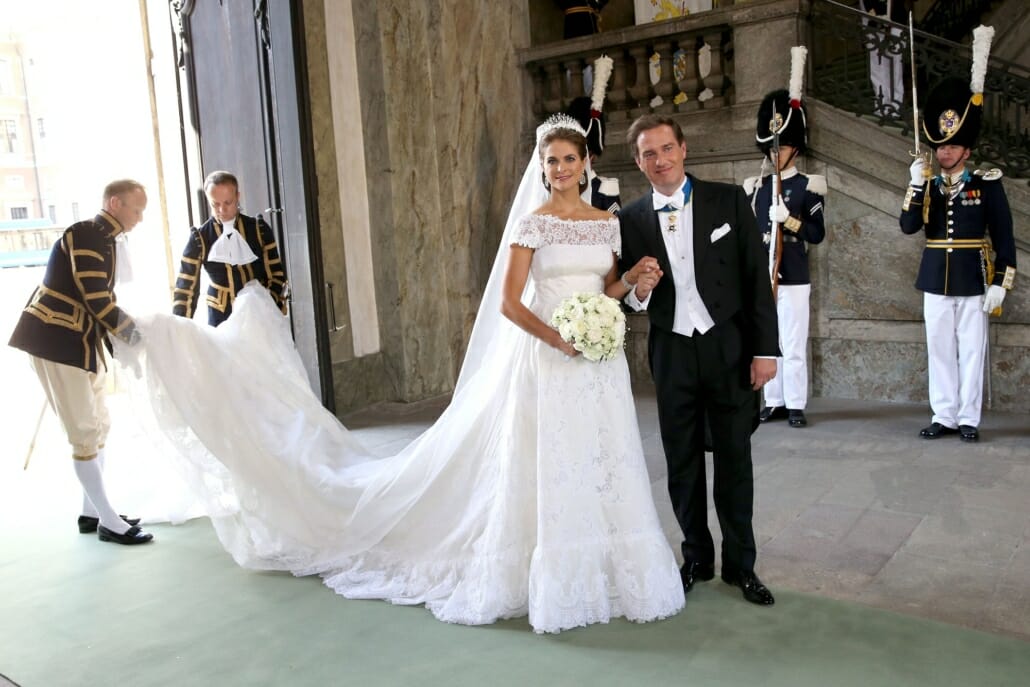
Evening Wedding Dress Codes
When used in the context of a wedding, formal, semi-formal and informal are not just dress codes but umbrella categories for all aspects of a wedding’s formality. In this regard, the attire for the wedding party (and guests) is derived from the event’s overall formality and not vice versa. Wedding attire is further dictated by time of day with evening weddings requiring a higher standard of dress than daytime weddings.
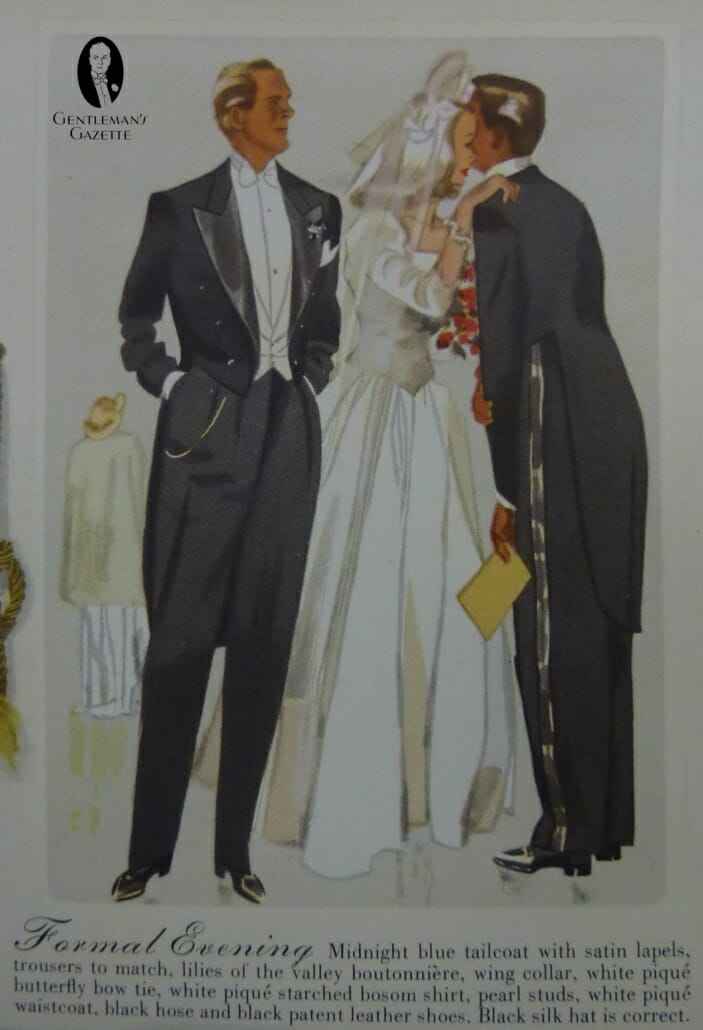
In England weddings and receptions are usually held during the day so evening dress codes rarely apply. In North America the interpretation of dress code terminology for evening weddings has changed over the years just as it has for other types of special occasions. However, the hierarchy of male attire is the same regardless of the terminology applied to it:
| Male Attire | Traditional Classification | Contemporary Classification |
| White Tie | Formal | Ultra Formal |
| Black Tie | Semi-Formal | Formal |
| Suit | Informal | Semi-Formal to Formal |
What to Wear as a Groomsman
White-tie attire is appropriate for the men in the wedding party only at the most formal type of wedding which will typically feature engraved invitations written in the third person, a ceremony in a cathedral or prestigious house of worship and a lavish reception at a country club or other upscale venue. Typically there are 200 or more guests. The bride’s dress will usually have a train for which the long skirt of a tailcoat is the perfect complement. Needless to say, these types of weddings are extremely rare today.
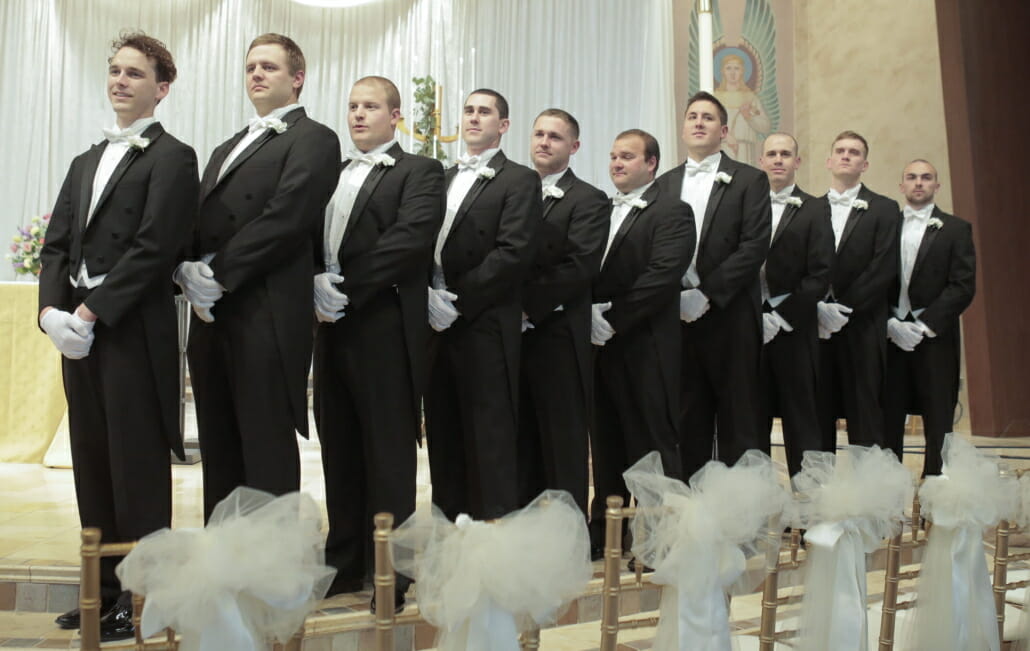
If a bride and groom wish the groomsmen and fathers to dress in black tie then their wedding does not require white-tie levels of opulence but tradition dictates that it should still be suitably formal. The invitations should be conservative, the ceremony should be held in a place of worship or upscale banquet hall and the reception should be an elegant sit-down dinner. Guests usually number between 100 and 200.
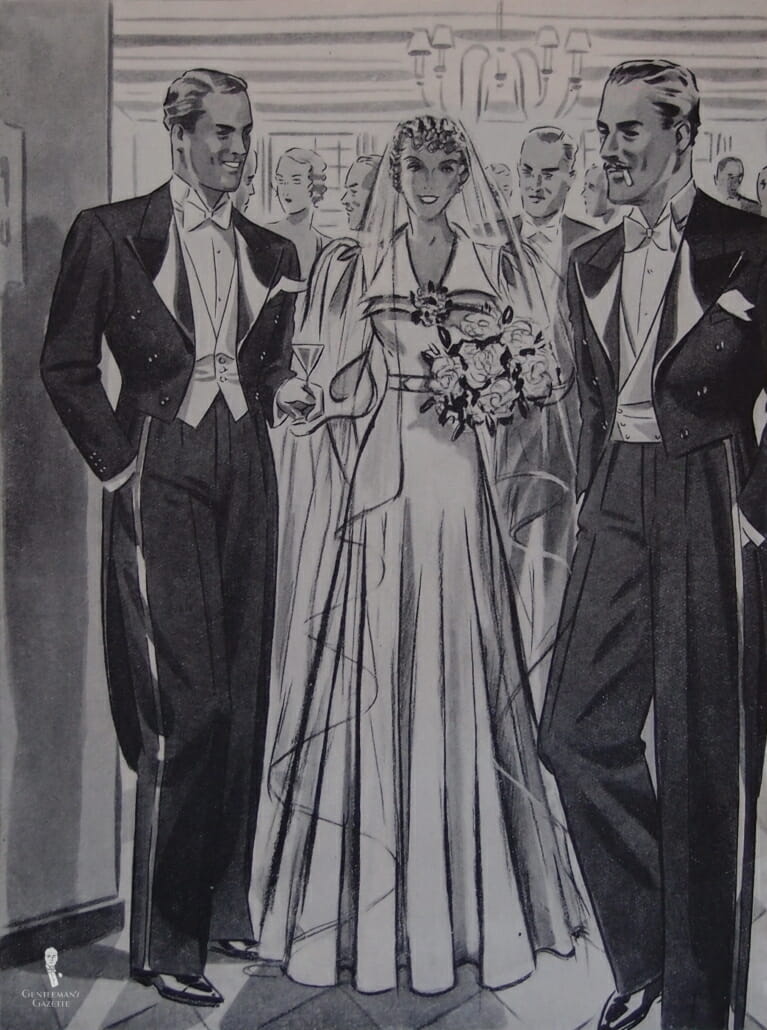
If there are less than 100 guests and the invitations, ceremony and reception are all relatively informal then dark suits will suffice. Formal attire would be incongruous in this context.
For more information please check out our in-depth Groomsman Attire Guide.
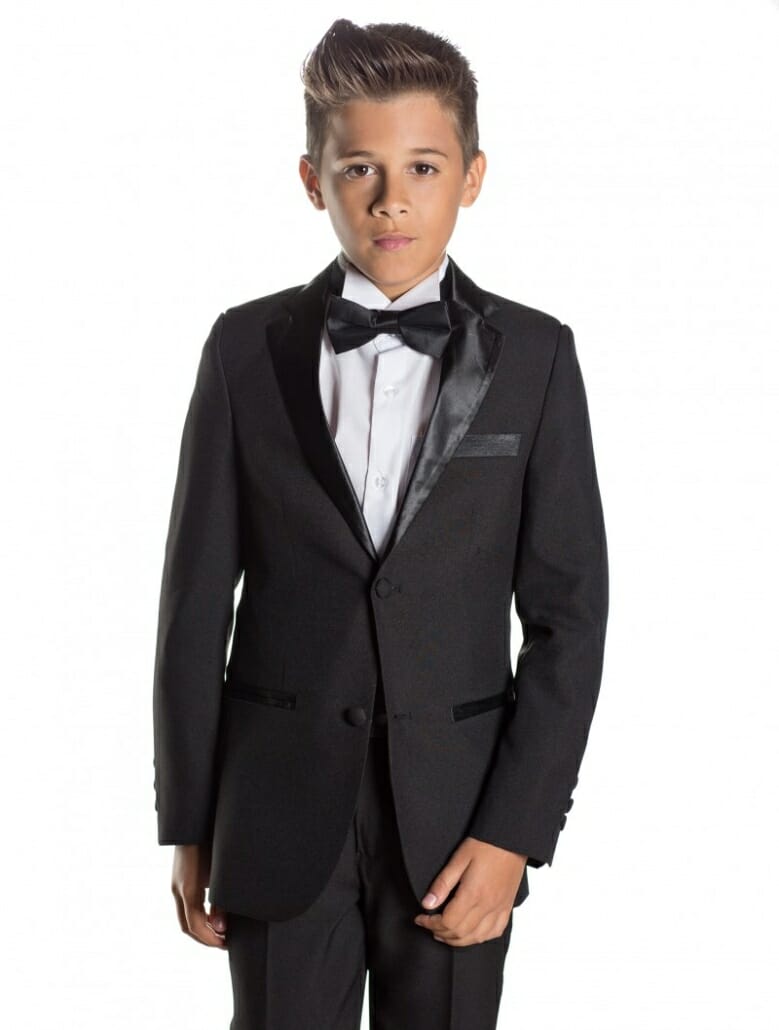
Young Attendant Attire
While it has become common to dress ring bearers similar to the rest of the groomsmen this practice – like the trend of matching ushers’ bow ties to bridesmaids’ dresses – suggests an ignorance of the sophistication, elegance and maturity that formal wear is meant to imbue. Emily Post’s Etiquette prescribes white Eton jackets with short pants for very young ring bearers, and for train bearers and pages navy blue suits when they are older. Only junior ushers should wear the same clothing as their adult counterparts.
What To Wear As A Wedding Guest
Some traditional authorities expect guests to know the appropriate dress based on the context of the wedding’s overall formality. However, many people today are unfamiliar with conventional dress protocol. Furthermore, there is conflicting advice on whether to dress at the same level of formality as the wedding party or one level below. In light of these circumstances, most authorities now advise that if a bride and groom want their guests to show up in tailcoats or tuxedos they should specifically note “white tie” or “black tie” on the invitations.
If there the ceremony and reception are separate, the dress code usually refers to the latter. (Due to their subjectivity, the terms “formal”, “semi-formal” and “informal” should never be used on invitations.) This consideration is particularly important for evening weddings in England since guests typically wear morning dress to weddings there.
Only the traditional form of black tie should be worn to a wedding; both conventional and modern authorities agree that this is not an appropriate time to be creative. This is also not the time to wear a boutonniere as these are reserved for the men in the wedding party.
For more details please refer to our Wedding Guest Attire Guide. Also make sure to check our guide on wedding guest etiquette so you don’t ruin anyone’s day.
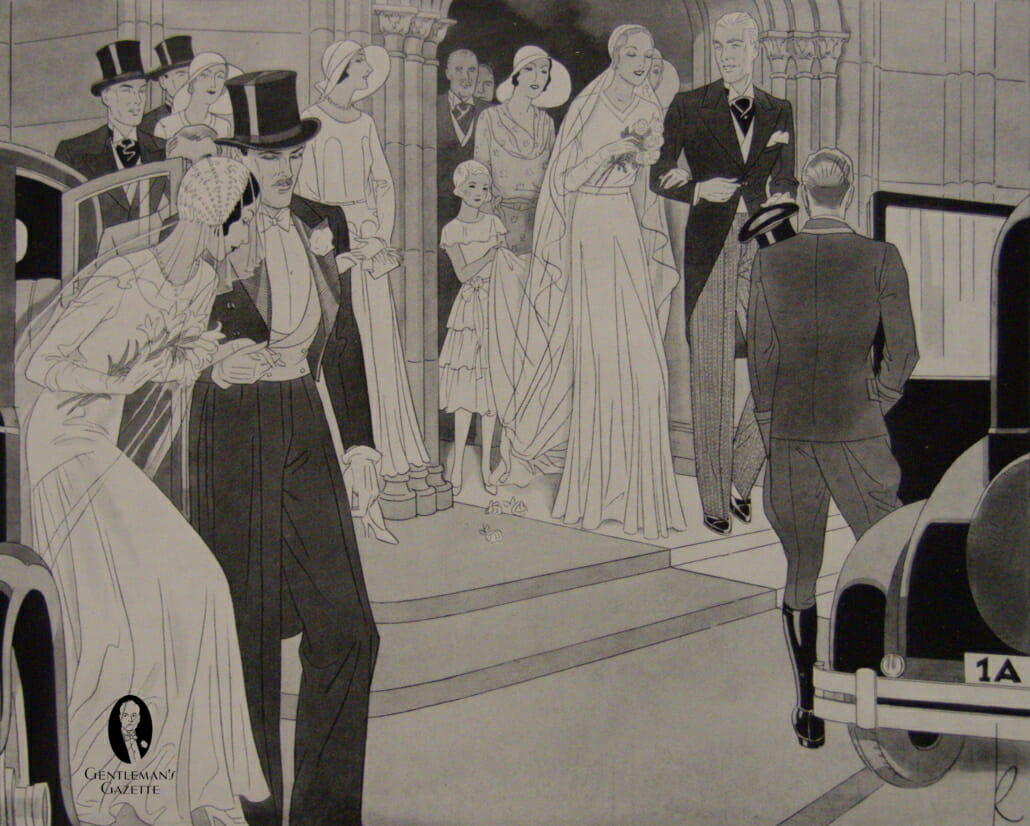
Time of Year Considerations
When tuxedos are required at tropical weddings or summer weddings in warmer climes then a white dinner jacket is a popular – and correct – alternative. See Warm-Weather Black Tie for complete details.
There is no warm-weather equivalent of the tailcoat because ultra-formal white-tie affairs are held only in winter when sunset arrives early. Traditionally, they are also held only in the city because it is intrinsically more urbane than a rural setting.
Time of Day Considerations
As explained in Etiquette: Formal Tradition, black tie and white tie are categories of evening wear and evening wear is not meant to be worn before six o’clock or before dark, whichever comes first. Therefore, formal weddings that take place during the day traditionally require morning dress, the daytime equivalent of evening wear.
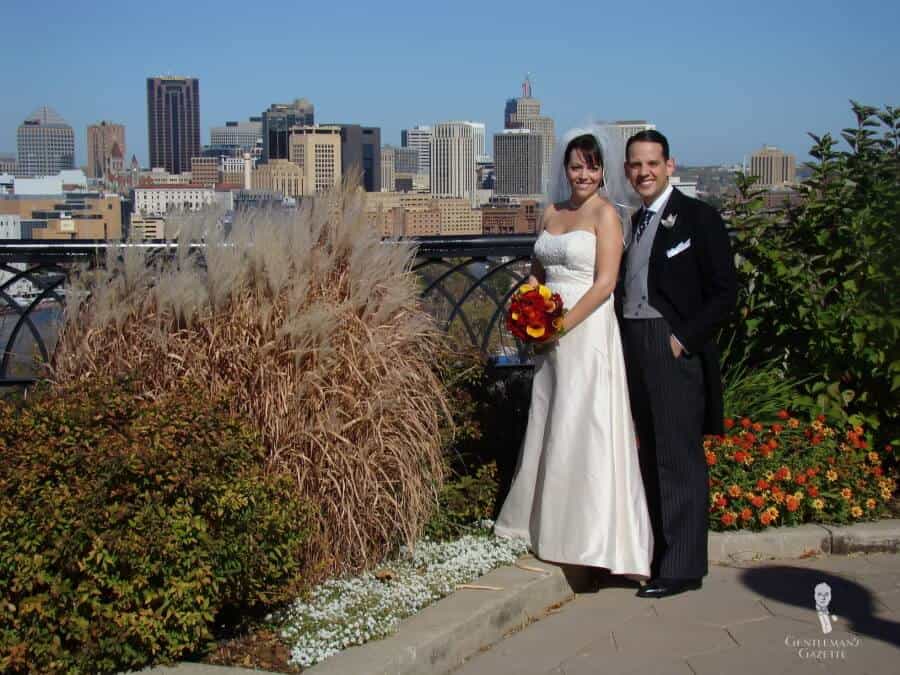
Since this attire is virtually extinct in North America, dark suits are an acceptable substitute. Convention dictates that the daytime dress codes apply to any wedding that takes place prior to 6 or 7 o’clock even if it means that morning dress will be worn well into the evening at the reception. However, some contemporary American authorities recognize that the majority of U.S. weddings straddle the dividing line and allow for tuxedos for a 4 or 5 p.m. ceremony if the reception will end late at night.
While the betrothed (or their actively involved mothers) have some leeway in deciding how far up they want to move the black-tie start time, there is not much flexibility in moving it back. Conventionally any wedding starting after 6 or 7 p.m. is considered very formal which means only white tie is acceptable.
In Europe it is more common for weddings to start early and end late at night. In those cases the groom often changes outfit from formal daywear to formal evening wear.

What To Wear As The Groom
Groom Style
Grooms-to-be have often asked us how they can stand out from their groomsmen in a traditional way.
Formal weddings call for formal dress and conventional evening dress is intended to allow the women to take center stage in their elaborate finery while their men provide an elegantly understated and uniform backdrop. That is why historically the sole nod to the groom’s special role was a slightly elevated outfit such as white tie over black or simply his unique boutonniere, preferably a flower from the bride’s bouquet.
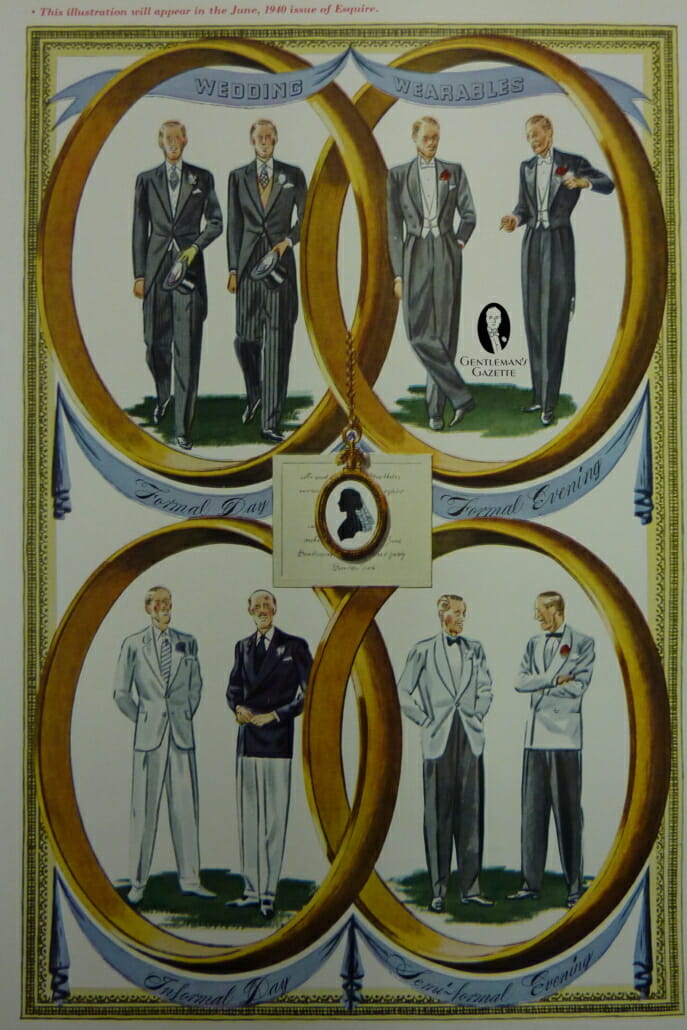
Other than that, tradition assumes that guests don’t require help identifying the groom – he’ll be the one marrying the bride.
For an entire guide just about the groom wedding attire, take a look here.
However, should a groom be determined to express his individuality more emphatically, black tie offers a number of acceptable variations that can be used to his strategic advantage. When choosing the wedding party’s tuxedos he may want to consider the following options:
Groom vs. Groomsmen
- More formal peaked lapel vs. less formal shawl collar
- More formal wing collar shirt* vs. less formal turndown collar shirt
- More formal white waistcoat vs. traditional black waistcoat or cummerbund
- Mother-of-pearl studs and links vs. opal or gold jewelry
- Black jacket at warm-weather wedding vs. white jacket at warm-weather wedding
Warm-Weather Summer Wedding
*If opting for a wing collar ensure that it is the traditional stiff, tall, preferably detached version. If it’s the flaccid, miniscule modern style your bride may ask your better-dressed best man to stand in for you.
What’s not acceptable under any circumstances is the mixing of a white-tie tailcoat with black-tie accessories. Wearing a white bow tie with a tuxedo has been an equally grave faux pas since the black-tie dress code was finalized in the 1920s but it has been an admittedly common practice for grooms around the world ever since then.
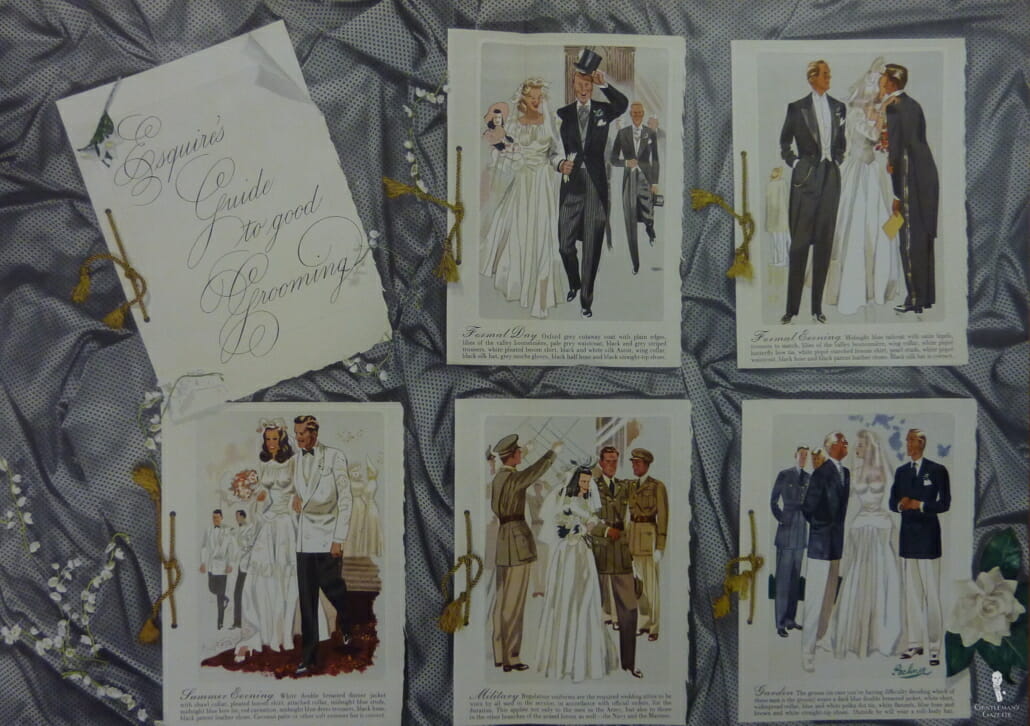
Bonus Tip: Complementing, Not Matching, Ensembles
“Friends Don’t Let Friends Match the Bridesmaids”
Your bride is obviously an absolutely wonderful woman or you would not be committing to her for the rest of your natural life. And your wedding day is likely something that she has dreamed of for a long time so it is both gracious and mature of you to defer to her preferences for everything from invitation wording to cake flavor.
However, your formal attire is the exception to the rule. No matter how little interest you have in clothing in general, remember that your clothing reflects who you are as a man and carefully consider the implications of allowing your fiancée to base your outfit on the color of the bridesmaids’ dresses. At best you will be on par with a little girl’s dressed-up puppy and at worst you will be reduced to the status of a matching handbag.
Explore this chapter: 9 Advanced Black Tie & Tux Coverage
- 9.1 Black Tie, Tuxedo & White Tie Evening Wear Glossary
- 9.2 Black Tie Dress Code for Women – Ladies’ Evening Wear
- 9.3 Tuxedo Black Tie Myths & Merits Debunked
- 9.4 Orders Decorations & Medals with Black Tie & White Tie
- 9.5 Clerical Formal Wear
- 9.6 Military Formal Attire – Mess Dress
- 9.7 Scottish Highland Dress, Irish, and Welsh Formal Black Tie & White Tie Attire
- 9.8 Women’s Tuxedos and Tailcoats
- 9.9 Smoking Jacket Guide
- 9.10 Formal Evening Wedding Attire & Etiquette
- 9.11 How To Wear A Tuxedo Like James Bond
